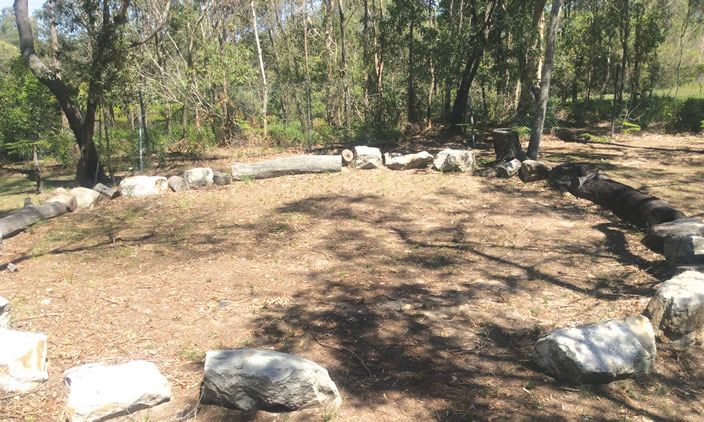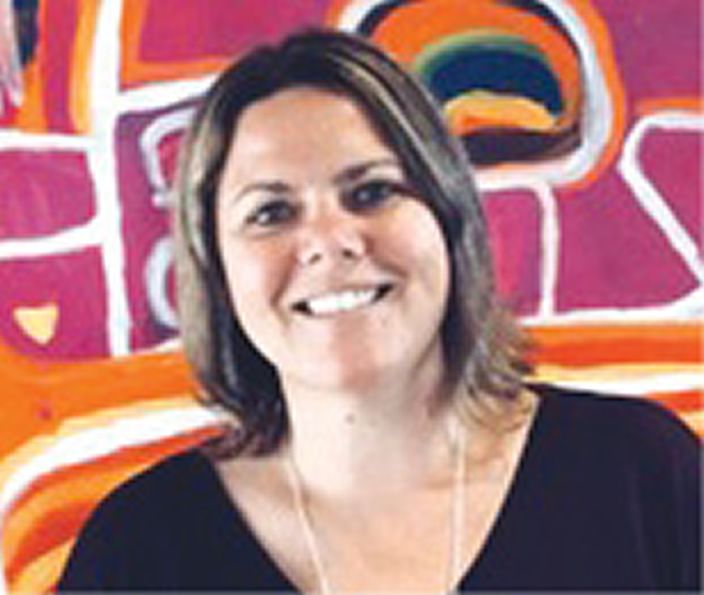
The Yarning Circle
Flexi schools offer a real alternative for Indigenous students, writes Dr Marnee Shay.
I am an Aboriginal educator and researcher. My maternal connections are to Wagiman Country but I was born in Brisbane and raised in South East Queensland, where I live today. I was working as a youth worker before I went back to study to become a qualified secondary teacher. It was my background as a youth worker and my cultural identity, that drew me to teaching in flexi schools. I worked as a classroom teacher in flexi schools in Noosa and Logan then went on to become the teacher in charge in Inala, where I worked with the community and the Queensland Police Service to establish what is now the Inala Flexible Learning Centre.
Flexi schools are schools for young people who have been disenfranchised from mainstream education settings. Generally, there are two different types of flexi schools or programs in operation. The first are longer term options where young people can complete Year 12 or equivalent and aim to change the approach of education to meet the needs of young people. The second are shorter term options (sometimes annexed off a mainstream school) which aim to support the young person to re-engage full time into a mainstream school setting (te Riele 2007). My teaching experience was in the former; longer term options aimed at approaching education differently – and this took me down a path of exploring what the implications at these schools are in Indigenous education when I embarked on research study through my Master of Education (Research) and later a Doctor of Philosophy (Shay 2017).
Successfully teaching disengaged youth
When I commenced my research journey my mind was full of memories about the stories of the young people I was privileged to work with, many of whom were Aboriginal and Torres Strait Islander young people. I remembered working with young people who had not attended school for years prior to engaging with us at the flexi school. Yet, some would attend almost every day with us and appeared to enjoy school and learning again. I remembered all my experiences in working with resilient, intelligent, and strong young people that challenged all of the preconceived ideas society has about young people who are ‘disengaged’. There were endless stories of young people who loved learning but couldn’t attend mainstream school because they were being bullied, experiencing racism, couldn’t afford school uniforms, didn’t enjoy the structure of a typical school timetable – and many more reasons. I knew of successes we had achieved in practice with young people who had exhausted every other avenue they had available to stay at school. We often worked with young people who had been formally or informally excluded and through their own words would not be doing anything if the flexi school did not exist.
In starting to look at what research about flexi schools existed, I found quickly that there was a scarcity of research in flexi schools generally, and little evidence of any research being undertaken by Indigenous researchers or by researchers who had practitioner experience in those settings. I also found that obtaining data on Indigenous student enrolments and Indigenous staff numbers was extremely difficult, which I found to be quite odd when you consider how much data is available with relation to Indigenous Year 12 completions, Indigenous attendance, and Indigenous literacy and numeracy outcomes through the Close the Gap reporting each year (Australian Government 2020).
Key research findings
Some of the key findings from my Master’s and doctoral studies include:
How leaders in flexi schools are doing Indigenous education (Master’s study):
Demographic data showed that the average Indigenous enrolment across nine flexi schools was 31%, with 30% of the staff in flexi schools also Indigenous. Whilst small scale, this finding showed that disproportionately high numbers of Indigenous people are engaged in flexi schools as a school provider and employer (Shay & Heck 2015).
There was a reported strong willingness from school leaders to engage in self-directed learning in relation to Indigenous cultures; however, there was also limited evidence of how these understandings were implemented with relation to Indigenous education in their flexi school (Shay 2018).
The voices of Indigenous peoples undertaking educative roles in flexi schools (PhD study): Indigenous staff are undertaking complex and important roles in flexi schools and through the employment of Indigenous staff, flexi schools acquire much needed local cultural knowledge and capital to support the high numbers of Indigenous students.
There were issues of race and racism present in flexi schools, although participants in this study reported lower incidents in comparison with studies of Indigenous staff in mainstream settings.
The biggest concern expressed by Indigenous flexi school staff is that there is an over-reliance on cultural activities or celebrations in embedding Indigenous knowledges and perspectives across all areas of the school including the curriculum.
Since completing my research qualifications, I have continued to work with a number of flexi schools nationally in exploring the relationship between Indigenous education and flexi schooling contexts. In 2018 a colleague and I published an article in The Conversation: How flexi schools could help close the gap in Indigenous education’, where we outline the implications of flexi schools in the policy goal of closing the gap in Indigenous education (Shay & Lampert 2018). We outlined that flexi schools appear to be having a positive impact in keeping Indigenous students engaged in schooling. One critique we offer though is the great responsibility that comes with working with such high numbers of Indigenous young people, especially when we know that many of these young people are experiencing multiple layers of challenges.
Importance of building relationships
We know that flexi schools have more of a focus on relationships, are young person-centred and are focused on a more inquiry led curriculum (Shay & Lampert 2018). Many of the approaches flexi schools have used to successfully engage a large cohort of Indigenous young people can be applied in mainstream settings. We know although there are still many gaps in how schools are taking up policy changes such as the inclusion of two professional standards related to Indigenous education in the Australian Professional Standards for Teachers, 1.4 & 2.4 (AITSL 2017) and embedding Indigenous knowledges and perspectives through the national cross curriculum priority (ACARA 2016), some schools are doing great work.
In response to supporting high numbers of Indigenous young people, some flexi schools have been doing exemplary work in Indigenous education for some time. A current project funded by Edmund Rice Education Australia and UQ is exploring what excellence in Indigenous education is or could be. We are doing a number of case studies on flexi schools and mainstream schools where we are capturing examples of excellence put forward by Indigenous and non-Indigenous school staff. At one flexi school in Far North Queensland, some of these excellent practices were identified as:
- employment of Indigenous staff at a rate of almost 50 per cent
- embedding of Indigenous knowledges and perspectives across all curricular areas
- use of local Aboriginal languages in both school signage, whole of school meetings and generally
- development of cultural programs for all students (Indigenous and non-Indigenous) to learn about Aboriginal and Torres Strait Islander histories, cultures, communities and peoples
- presence of Indigenous artworks, design and stories in all aspects of the school – including on school shirts designed by young people.
I am very privileged to continue to work with flexi schools in my research work as well as in Indigenous education more broadly. The biggest question I will continue to explore is whether we should continue opening more flexi schools or focus on fixing the mainstream education system so there is no need for them to exist.



































































































































